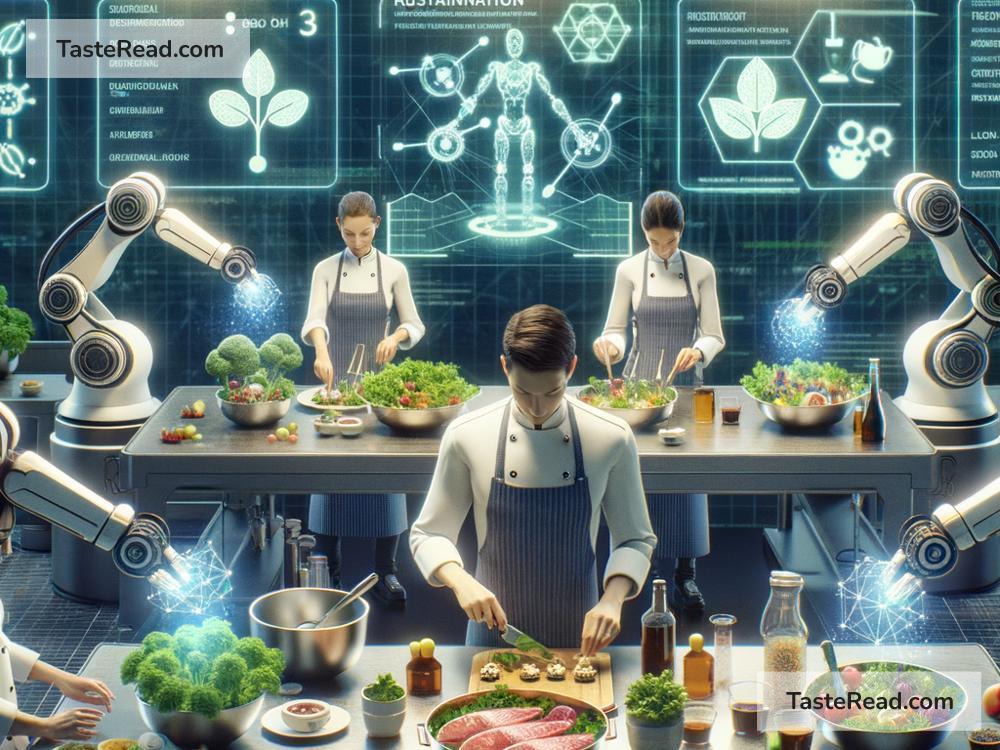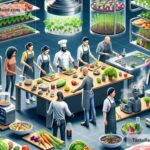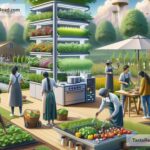The Future of Food: A Collaborative Approach to Building Better Systems
Food has always been an essential part of human life, but the way we grow, produce, and distribute food is rapidly changing. As populations grow, climate challenges intensify, and resources become scarcer, the future of food depends on creating smarter, more sustainable systems. Collaboration among farmers, scientists, governments, companies, and everyday people is key to ensuring that everyone has access to nutritious, affordable, and environmentally friendly food.
In this blog, we’ll explore how food systems are evolving and the role of collaboration in building a better future for food.
The Challenges We Face
Before we dive into solutions, let’s look at the challenges facing the food system today:
-
Rising Population: By 2050, the world’s population is expected to exceed 9 billion. Feeding this many people will require innovative approaches to agriculture and distribution.
-
Climate Change: Extreme weather, droughts, flooding, and rising temperatures are threatening crop yields and livestock health. Traditional farming methods struggle to keep up as environmental conditions change.
-
Inequality: While some parts of the world enjoy an abundance of food, millions of people still face hunger and malnutrition. Roughly 1 in 9 people globally go to bed hungry every night.
-
Resource Shortages: The food system depends heavily on finite resources like freshwater, fertile soil, and fossil fuels. Inefficient use of these resources can cause long-term harm to the planet.
-
Food Waste: About one-third of the food produced globally (around 1.3 billion tons) is wasted every year. This waste happens at every stage, from farms to grocery stores to consumers’ homes.
Clearly, we need new ways of thinking to solve these problems—and no single entity can do it alone.
Collaborative Food Systems: Working Together for a Better Future
Solving global food challenges requires teamwork. Collaborative systemic food systems bring together different groups—farmers, businesses, non-profits, governments, researchers, and consumers—to work toward shared goals. Let’s look at how collaboration could shape the future of food.
1. Building Smarter Farms
Farms are the backbone of the food system, but new technologies and practices are helping farmers become more efficient and sustainable. Precision farming, for example, uses sensors, GPS, and data analysis to monitor soil health, water use, and pest control. These tools allow farmers to minimize waste and maximize crop yields.
Collaboration plays a big role here. Farmers can partner with companies that provide technology, scientists who develop better crop varieties, and governments that offer resources like training programs. Cooperative efforts make it easier for small-scale farmers, who often lack access to advanced tools, to adopt modern methods.
2. Alternative Proteins and Sustainable Diets
One exciting area of innovation is the rise of plant-based meats, lab-grown proteins, and insect farming. Producing traditional meat requires enormous amounts of water and land, as well as large-scale greenhouse gas emissions. By exploring alternative protein sources, we can reduce the environmental footprint of food production.
Collaborating with businesses, investors, and consumers is key to making these foods widely available. Companies need funding to develop new products, governments can provide incentives for sustainable food production, and consumers play a role by adopting eco-friendly diets. Together, these efforts can make alternative proteins mainstream.
3. Reducing Food Waste
One-third of all food produced goes to waste. Reducing food waste is essential for a sustainable food system. Governments can create policies to prevent waste, such as setting up composting programs or incentivizing businesses to donate surplus food to charities. Grocery stores can use data analytics to better manage inventory and reduce spoilage.
On the consumer side, apps like Too Good To Go and OLIO allow people to buy excess food from restaurants and stores at a discount, reducing waste while saving money. Collaboration between tech developers, local communities, and businesses makes these solutions possible.
4. Vertical Farming and Urban Agriculture
As cities grow, space for farming becomes limited. Vertical farming—growing crops in stacked layers indoors—and urban agriculture bring food production closer to densely populated areas. These methods use less land and water, and because they often operate near consumers, they reduce the need for long transport chains.
Governments, city planners, and entrepreneurs can work together to integrate these systems into urban environments. For example, rooftop gardens, hydroponic systems, and indoor farming companies can supply fresh local food to city residents.
5. Empowering Consumers
Consumers hold ultimate power in shaping the future of food. When individuals choose sustainable diets, buy locally produced food, and support ethical brands, they encourage businesses and policymakers to create better systems.
Community initiatives like farmers’ markets, food co-ops, and educational programs play a big role in guiding consumer behavior. Partnerships among local farmers, schools, and non-profits can teach people how food choices impact the environment and their health.
How Collaboration Creates Resilient Systems
The interconnected challenges of food production, distribution, and consumption require systemic solutions, meaning they can’t be solved in isolation. Bringing together diverse players—farmers, scientists, tech innovators, activists, and consumers—creates smarter systems built for resilience.
One example of collaborative success is the push for climate-smart agriculture. Farmers worldwide are adopting practices like agroforestry (planting trees alongside crops) and regenerative farming (restoring soil health), supported by governments, researchers, and food companies that fund these efforts.
Another example is global food relief initiatives. Organizations like the World Food Program partner with governments, companies, and donors to provide food to communities affected by crises like war or natural disasters.
Conclusion
The future of food holds immense challenges, but also countless opportunities for growth and innovation. By working together through collaborative systemic systems, we can build smarter, fairer, and more sustainable ways to feed the world. Whether it’s adopting cutting-edge technologies, reducing waste, or empowering communities, every small effort adds up.
Food isn’t just fuel for our bodies; it’s a shared resource that connects us all. The choices we make today—such as supporting sustainable practices and working together—will pave the way for a brighter, healthier food future.


